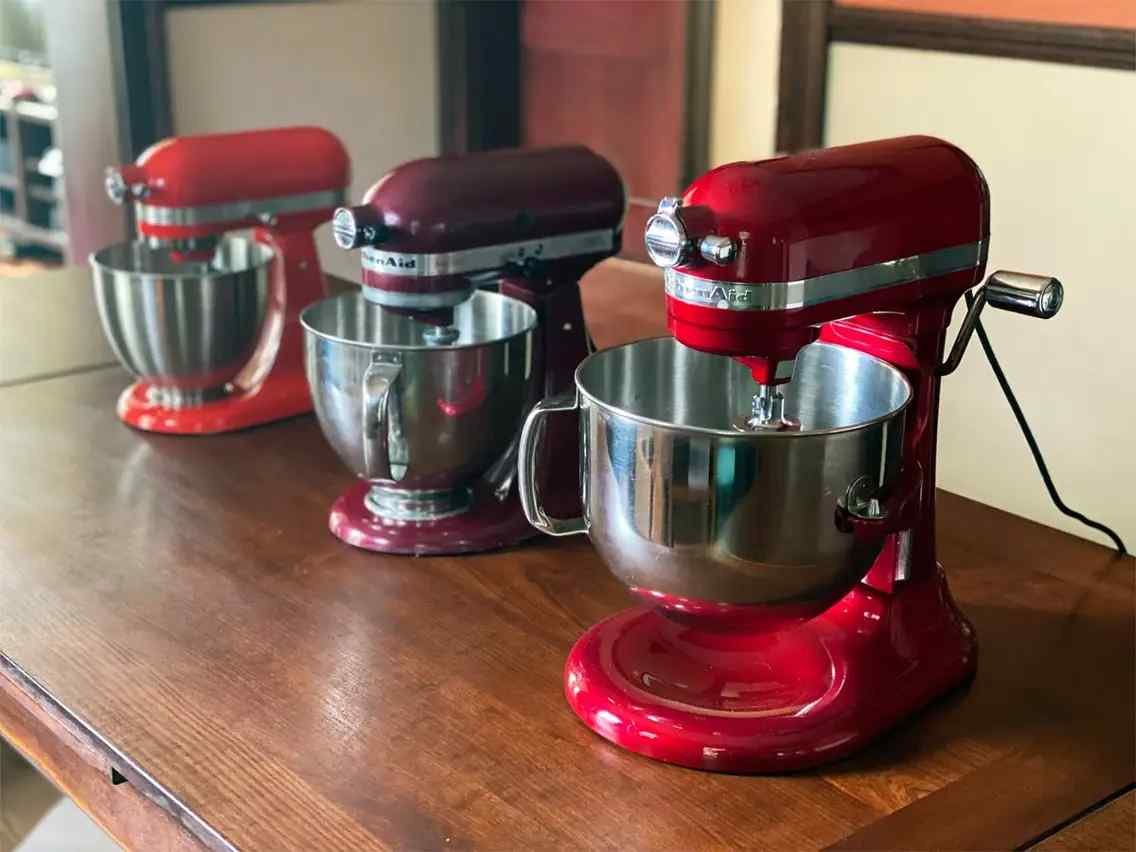When your KitchenAid mixer starts making a clicking noise, it’s a signal something’s amiss. This common issue often has a simple fix.
Discovering the cause can transform your baking experience. Let’s find out what might be happening inside your mixer and how you can smoothly resolve it without missing a beat in your culinary creations.
5 Most Common Causes of Clicking Sounds in KitchenAid Mixers & Solutions
Pinpointing the source of clicking sounds in KitchenAid mixers is critical for efficient fixing. Common problems include:
- Screws on the motor mount being too tight
- Issues with gears
- Attachments or blades not being secure
- Objects stuck in the motor
- Aging motor brushes
Solving these issues involves careful diagnosis, then applying specific remedies to get the mixer back to optimal condition.
1. Motor Mount Screws Too Tight

A common cause of clicking noises in KitchenAid mixers is when motor mount screws are tightened too much. This can cause misalignment and unnecessary stress on internal components.
The excessive tightening can skew the motor’s position within its housing, leading to inefficient operation and noticeable clicking sounds as it struggles.
To address this problem, ensure the mixer is unplugged from any power source for safety. Then, use the right tools to gently loosen the motor mount screws, reducing the tension.
It’s important to find a balance in adjusting these screws because if they are too loose, it could also cause issues with how the mixer operates.
Achieving the right tension will help align the motor correctly, promoting smooth, noise-free operation and helping to prolong the device’s life.
2. Gear Issues

After addressing the potential misalignment caused by overly tightened motor mount screws, another common cause of clicking noises in KitchenAid mixers is related to the gears. Gear issues can emerge from various situations:
- Wear and Tear: Gears may grind against each other due to extended use, or teeth might strip, leading to intermittent engagement.
- Lubrication Problems: A lack of lubrication can lead to increased friction and noise, or old, hardened grease may need to be replaced.
- Misalignment or Damage: Gears can suffer physical damage from being dropped or handled improperly, or they might be misaligned due to assembly errors or after maintenance.
To tackle gear issues, the first step involves diagnosing the exact problem. This usually requires taking apart the mixer head to visually check the gears for signs of wear, damage, or inadequate lubrication, followed by carrying out the necessary repairs or adjustments.
3. Loose Blades Or Attachments

A frequent reason for clicking sounds in KitchenAid mixers involves loose blades or attachments, necessitating a thorough check and adjustment. It is vital to ensure every part is securely attached to enhance the mixer’s functionality and durability.
| Problem | Reason | Remedy |
|---|---|---|
| Clicking Sound | Beater Blade not tight | Secure the beater blade onto the shaft |
| Uneven Mixing | Attachment not fixed correctly | Properly attach to the hub |
| Odd Vibration | Beater blade contacts the bowl | Modify the bowl’s position or beater’s alignment |
| Reduced Efficiency | Attachments not firmly connected | Reconnect for a tight fit |
This table outlines frequent problems linked to unsecured blades or attachments, offering guidance for users to detect and solve these issues for an improved mixing operation.
4. Debris In The Motor

Debris accumulation within the motor compartment significantly contributes to clicking sounds in KitchenAid mixers, requiring a thorough inspection and cleaning process.
Flour, sugar, and other fine particles can enter the motor housing over time, causing increased friction between moving components, premature wear of parts, potential overheating problems, and interference with the motor’s magnetic field.
This leads to reduced motor efficiency and possible intermittent clicking or grinding sounds. Additionally, debris can obstruct cooling vents, impair heat dissipation, and pose a risk of overheating and additional mechanical damage.
To address these issues, it is necessary to carefully disassemble the mixer, clean out all the debris, and ensure that parts are spotless before putting everything back together.
5. Worn Out Motor Brushes

Addressing the issue of debris inside the motor compartment, another significant source of clicking noises in KitchenAid mixers is the deterioration of motor brushes.
These brushes are vital for transferring electricity to the motor, allowing it to operate efficiently. Over time, these components may wear down, causing sporadic contact and the noticeable clicking noise.
| Cause | Solution |
|---|---|
| Deteriorated Brushes | Install new brushes |
| Misalignment | Correct the placement of the brushes |
| Accumulation of Dust | Clean the brush compartments |
| Faulty Brush Springs | Replace the springs for optimal tension |
To address the deterioration of motor brushes, it’s necessary to check them for signs of wear, ensure their correct placement, remove any dust accumulation, and replace them if needed to enhance your mixer’s functionality.
When To Seek Professional Help
In certain situations, consulting a professional technician is advisable to accurately diagnose and rectify the underlying issues causing your KitchenAid mixer to emit a clicking noise.
While many minor problems can be fixed with basic troubleshooting, certain conditions warrant professional intervention for a safe and effective repair. Recognizing when to seek help is crucial for maintaining the longevity and functionality of your appliance.
Situations requiring professional assistance include:
- Electrical issues: These are not only challenging but also potentially dangerous to address without the right training and equipment. Electrical faults may manifest as intermittent clicking sounds, often accompanied by other symptoms such as failure to start or erratic mixer speeds.
Signs of electrical issues:
- The mixer does not turn on.
- Variable speeds are unresponsive or erratic.
- Internal mechanical damage: This can occur after prolonged use or due to a manufacturing defect. Complex mechanical problems often require detailed disassembly and specialized knowledge to repair correctly.
Indications of mechanical damage:
- Persistent clicking noise despite replacing accessible components.
- Decreased mixer performance or unusual resistance during operation.
- Warranty concerns: If your mixer is still under warranty, unauthorized repairs could void the warranty. Always check with a certified technician or the manufacturer before undertaking any repairs that could affect your warranty status.



